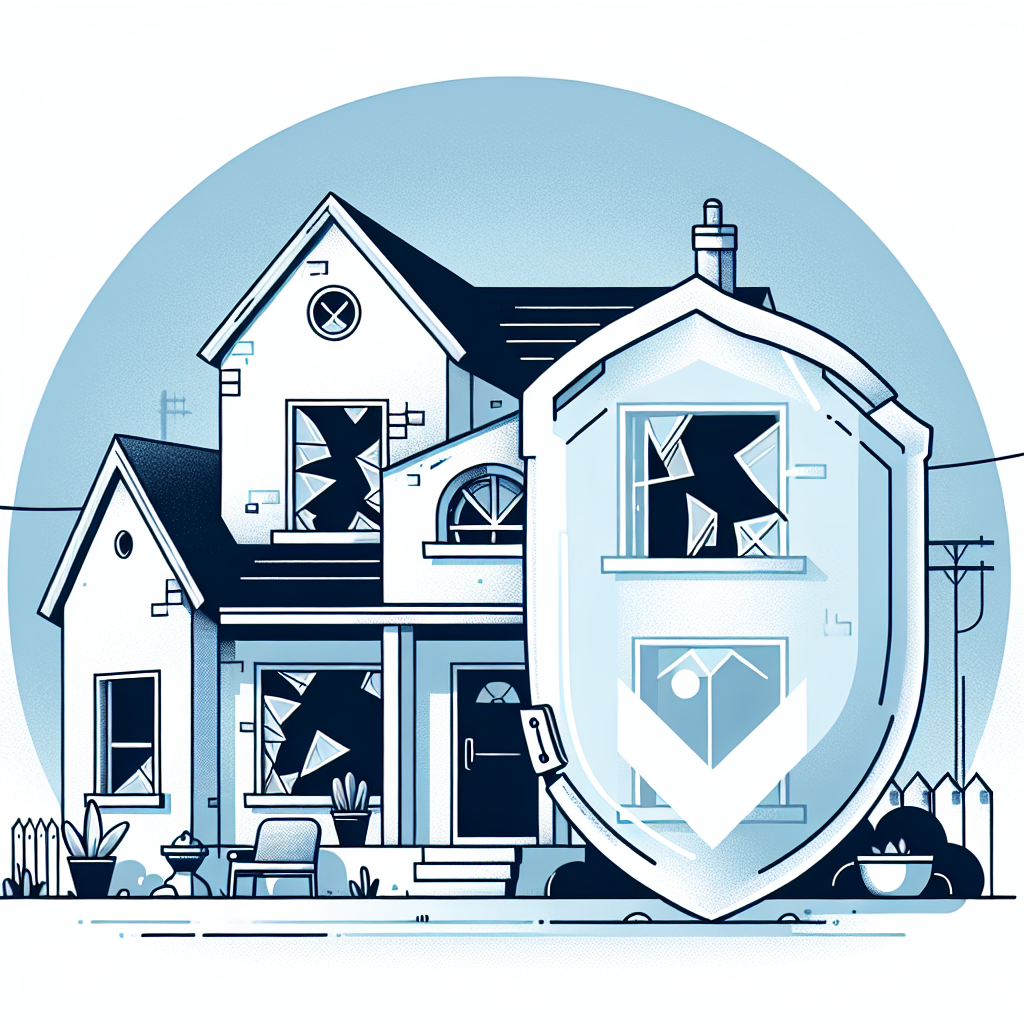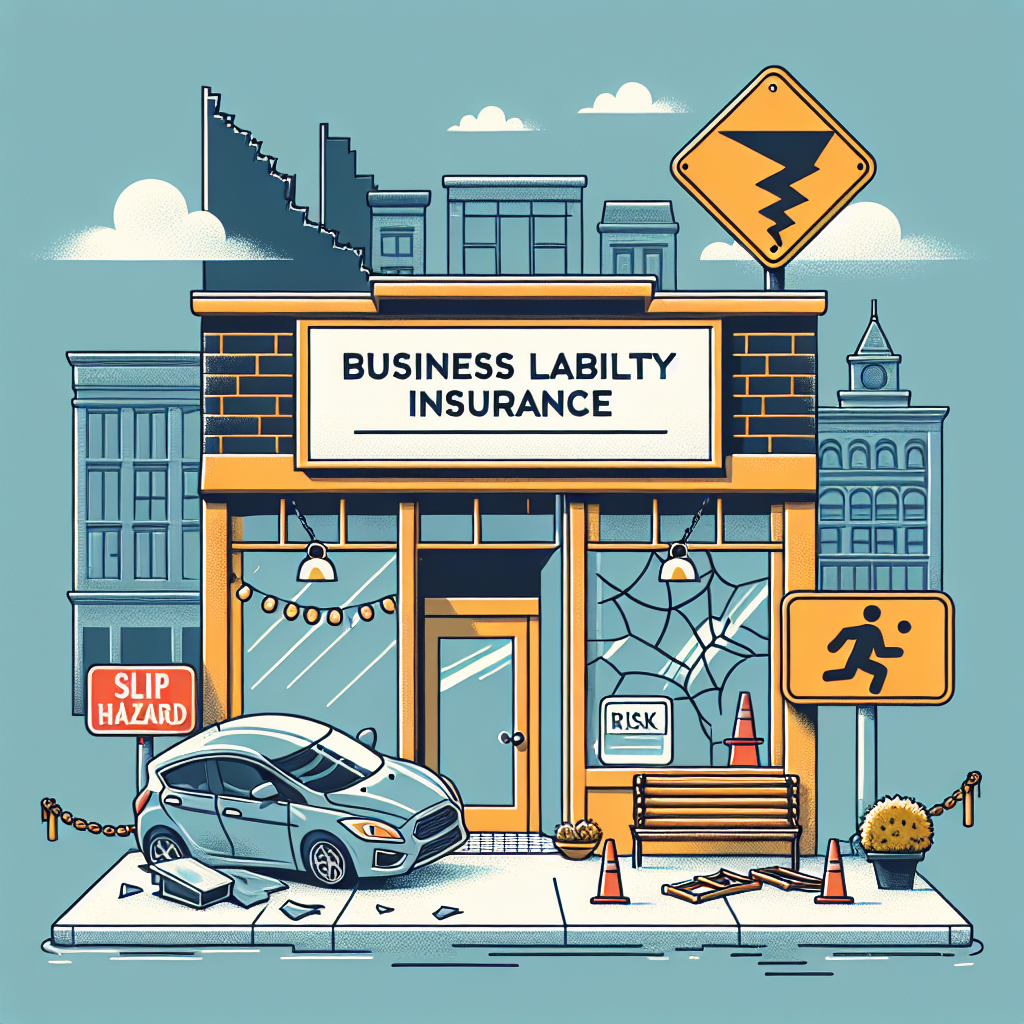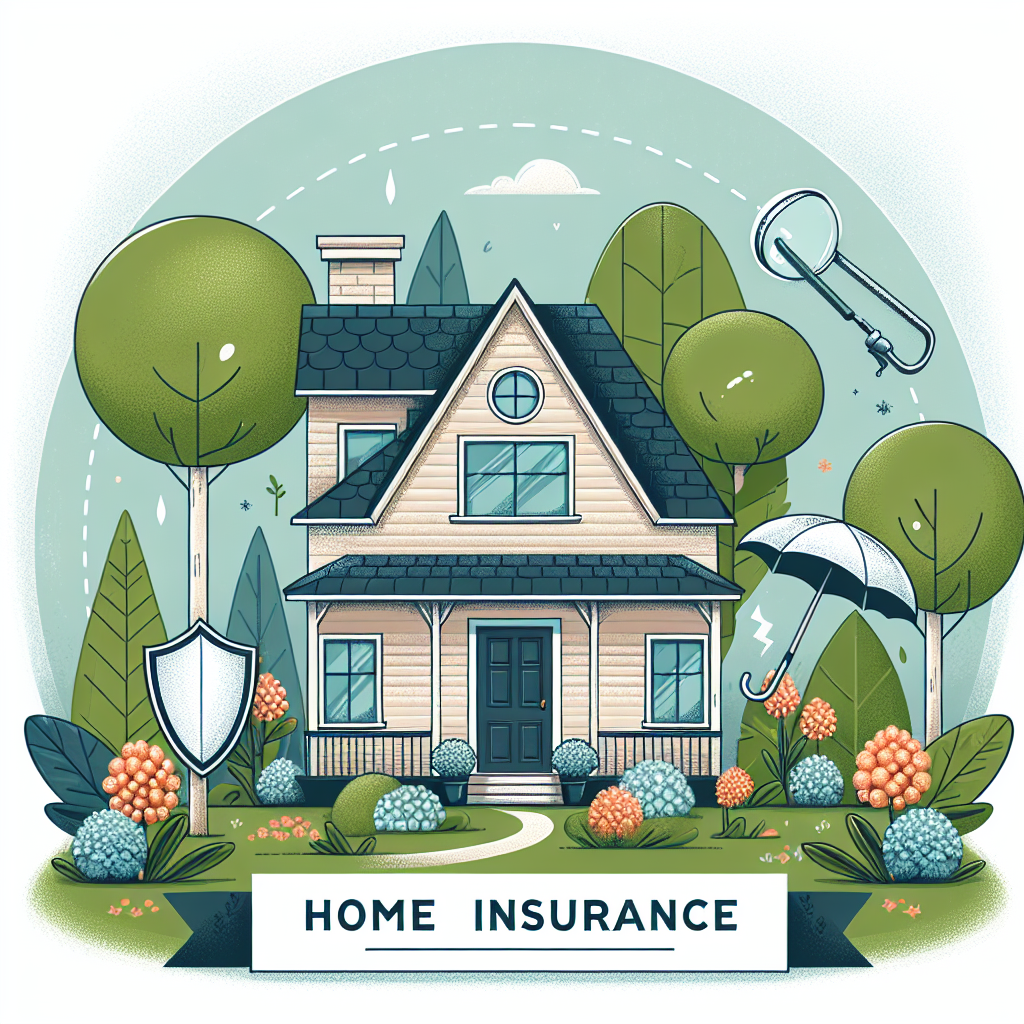Filed under Home Insurance on
Vandalism Home Insurance Coverage Explained

Broken windows, spray-painted fences, and smashed mailboxes are more than nuisances—they are costly property losses that can disrupt your schedule, your budget, and your sense of security. The good news: many homeowners, condo, and renters policies include protections for deliberate property damage. Understanding what is and isn’t covered can help you respond quickly, keep out-of-pocket costs low, and reduce your chances of a future rate hike. This guide takes you through the essentials of vandalism protection in home policies, with practical advice and real-world context to help you make confident decisions.
Why vandalism matters right now
While overall property crime rates have fluctuated over the last decade, vandalism remains a persistent risk. Law enforcement agencies consistently report malicious mischief, graffiti, and property defacement among the most common non-burglary incidents. The Insurance Information Institute notes that weather and theft dominate claims frequency, but the severity of vandalism losses has trended upward in recent years, driven by higher labor costs, supply chain constraints, and material inflation. When a single broken picture window can run into four figures, the terms of your vandalism protection can make a meaningful difference.
If you’re evaluating vandalism home insurance coverage, it’s helpful to break the topic into three questions: What counts as vandalism? How does a policy treat different parts of your property? And where do exclusions or special limits apply? Getting clarity on these points can prevent surprises at claim time.
What insurers mean by “vandalism”
Insurers generally define vandalism (often paired with “malicious mischief”) as intentional, willful damage to covered property. Think of acts like carving initials into a door, smashing a mailbox, spray-painting a garage, or deliberately damaging outdoor lights and windows. The intent element is key: accidental damage—like a neighbor’s baseball shattering a window—usually falls under a different peril, and wear-and-tear or deterioration isn’t covered at all.
Police involvement also matters. Filing a police report strengthens your claim by documenting the incident and demonstrating timely reporting—two things adjusters often look for when evaluating vandalism losses. While not always explicitly required by every insurer, reporting promptly can help validate that an event happened as described.
How homeowners policies treat vandalism
Most standard homeowners policies (HO-3 and HO-5) cover vandalism to the main structure, other structures (like detached garages and fences), and personal property, subject to your deductible and policy limits. HO-3 policies provide “open-perils” coverage on the dwelling and “named-perils” coverage on personal property, while HO-5 policies often extend open-perils protection to personal belongings as well. In either case, intentional damage caused by a non-household actor is generally covered, barring specific exclusions.
Condo (HO-6) and renters (HO-4) policies typically include vandalism as a named peril for personal property. HO-6 also protects building items you’re responsible for under your condo association’s bylaws—think interior walls, flooring, cabinets, and fixtures—often referred to as “building property” coverage.
Because different policies use different forms and endorsements, read your declarations page and policy jacket. If you’re comparing carriers, ask specifically how your vandalism home insurance coverage applies to the dwelling, detached structures, and contents.
What is typically covered
Vandalism-related coverage generally falls into four buckets. The details can vary, but the general framework is consistent across many standard policies.
1) Dwelling (your home’s structure)
- Broken windows, doors, and locks
- Spray paint or acid etching on siding or brick
- Damage to built-in fixtures, such as lighting and cabinetry
- Intentional damage to heating/cooling equipment or plumbing
Repair work is usually paid at replacement cost on the dwelling if you carry replacement cost coverage and meet insurance-to-value requirements. If you’re underinsured, co-insurance rules can affect your payout.
2) Other structures
- Detached garages and sheds
- Fences and gates
- Mailboxes, pergolas, and gazebos
Other structures often have a separate limit of 10% of your dwelling coverage by default. If your property includes significant outbuildings or fencing, consider raising this limit or adding endorsements.
3) Personal property
- Electronics, tools, furniture, and decor damaged by vandals
- Outdoor items such as grills or garden equipment (subject to special limits)
- Art and collectibles (often capped unless scheduled)
Personal property is commonly covered at actual cash value unless you’ve opted into a replacement cost endorsement. That means depreciation could reduce your payout. For higher-value items—jewelry, fine art, instruments—schedule them individually to avoid sublimits.
4) Additional Living Expenses (ALE)
If a vandalism event renders your home temporarily uninhabitable—say, widespread glass damage, compromised security, or broken utilities—ALE can reimburse reasonable costs for hotel stays, short-term rentals, meals, and extra transportation. Always check the trigger criteria and duration caps in your policy.
These components often apply to vandalism home insurance coverage across homeowners, condo, and renters policies, but the limits, valuation method (replacement cost vs. actual cash value), and triggers can differ.
What’s not covered or limited
Exclusions are the fine print that can derail an otherwise strong claim. Here are the most common pitfalls.
- Vacancy clauses: Many policies restrict vandalism coverage if a property is vacant—typically defined as empty of occupants and personal belongings—for more than 30 or 60 consecutive days. You may need a vacancy permit endorsement if your home will sit empty.
- Intentional acts by insureds: Damage intentionally caused by the policyholder or a household member is excluded. Insurers investigate for fraud indicators or liability elsewhere.
- Tenant-caused damage in landlord policies: If you rent out your property, a standard homeowners policy may not apply; you need a dwelling/landlord policy (often DP-3). Even then, intentional damage by a tenant may be excluded or limited unless specifically endorsed.
- Business property limits: Tools, inventory, or equipment used primarily for business may be capped under personal property limits unless scheduled or insured under a separate policy.
- Wear and tear/maintenance: Scratches, fading, and deterioration are not vandalism. If the damage looks like long-term neglect, it may be denied.
- Civil authority restrictions: Certain events related to war, terrorism, or nuclear hazard are excluded by default. Civil commotion or riot may be covered, but read the definitions.
Understanding these carve-outs is essential to managing your vandalism home insurance coverage and avoiding unpleasant surprises.
Deductibles, limits, and depreciation
Your deductible is the first number to consider. A $1,500 repair on a $1,000 deductible means only $500 from the insurer. If you’ve raised your deductible to save on premium, confirm that it still fits your risk tolerance for common vandalism losses like broken windows or graffiti removal.
Limits matter too. Other structures often default to 10% of dwelling coverage, and personal property sublimits can be lower than expected for high-value items. Without a replacement cost endorsement for contents, depreciation can reduce payments. If you own older furnishings or electronics, upgrade to replacement cost coverage for contents to keep out-of-pocket costs manageable.
How to file a vandalism claim (and get it paid)
The best claims are well-documented and promptly reported. Insurers and industry claims experts consistently recommend a clear, step-by-step approach:
- Ensure safety first. If there’s broken glass, damaged locks, or exposed wiring, secure the area to prevent further injury or loss.
- Call the police and file a report. Request a case number. Many carriers expect a police report for malicious mischief claims.
- Document everything. Take time-stamped photos and videos from multiple angles. Capture close-ups of entry points, paint markings, and any visible tampering with utilities.
- Protect against further damage. Board windows, cover openings with tarps, and keep receipts. Reasonable emergency repairs are usually reimbursable.
- Notify your insurer promptly. Provide a brief incident description, the police report number, and your initial photo set. Ask about preferred vendors for board-up or cleanup.
- List damaged items. For personal property, create an itemized inventory with descriptions, approximate age, and replacement estimates. Include purchase records if available.
- Meet the adjuster prepared. Walk through the damage, share documentation, and be ready to discuss repairs or estimates. Keep communication factual and consistent with your report.
- Review the settlement. Confirm whether it’s replacement cost or actual cash value. If ACV is issued first, you may receive the depreciation holdback after completing repairs.
Following this process helps maximize the value of your vandalism home insurance coverage and reduces the chance of delays or disputes.
How vandalism affects your premium
In many states, a single vandalism claim may lead to a modest surcharge for several policy terms, particularly if the payout is large. Frequency matters more than severity; two small claims can sometimes have a bigger rating impact than one larger claim. Insurers look at local crime scores, your prior claim history (often via CLUE reports), and the presence of protective devices.
Ways to keep costs in check include:
- Bundling home and auto to unlock multi-policy discounts
- Installing monitored security systems or smart cameras
- Upgrading exterior lighting and trimming sightline-blocking vegetation
- Raising your deductible if you can comfortably self-insure small losses
- Maintaining continuous coverage to preserve tenure discounts
Data from industry sources indicates that homes with monitored security or environmental sensors tend to have fewer and less severe claims, which can improve long-term pricing and retention. If your neighborhood forms a watch group or partners with local law enforcement for targeted patrols, mention it to your agent; some carriers consider community-level mitigation.
Renters, condo owners, and landlords
Policy form matters. While HO-3/HO-5 homeowners coverage tends to be robust for structures and contents, renters (HO-4) and condo (HO-6) policies focus on the property you own or are responsible for.
- Renters (HO-4): Covers your personal property and often ALE if a vandalized rental becomes uninhabitable. Your landlord’s policy repairs the building itself.
- Condo owners (HO-6): Protects personal property and “building property” inside the unit, depending on your association’s master policy. Review your bylaws to determine where your responsibility begins.
- Landlords (DP policies): For a rental house or multifamily unit, a dwelling policy (DP-3) is usually appropriate. Confirm whether vandalism by tenants is covered, excluded, or available by endorsement.
Tailoring your vandalism home insurance coverage to your specific role—owner-occupant, condo owner, renter, or landlord—ensures you’re not stuck with gaps between policies.
Special scenarios and gray areas
Not every act of property damage fits neatly into a label. Here are common gray areas insurers evaluate carefully:
- Graffiti removal: Usually covered if the affected surface is covered property. Specialty cleaning may require estimates and proof that standard methods won’t work.
- Arson: Typically covered under the fire peril, unless excluded due to fraud or other policy violations. Investigations can take longer.
- Riot or civil commotion: Often covered in standard homeowners forms, but definitions vary. Keep news clippings and police documentation if the event is part of larger civil unrest.
- Terrorism and war: Commonly excluded unless a terrorism endorsement applies (more typical in commercial policies).
- Utility and appliance tampering: Intentional damage to HVAC units, meters, or pipes is often covered; however, subsequent mold or long-term leakage may be limited if not promptly addressed.
When in doubt, ask your agent to walk through how your vandalism home insurance coverage would respond to these edge cases. A brief pre-claim conversation can reveal if an endorsement would be a smart add-on.
Prevention tips insurers love
Prevention not only keeps you safe but can also help with pricing and claim outcomes. Carriers frequently highlight these practical measures:
- Layered lighting and visibility: Motion-sensor lights, illuminated pathways, and trimmed shrubs minimize concealment spots.
- Smart surveillance: Cameras with cloud storage, doorbell cams, and window/door sensors create documentation and deterrence.
- Property markings: Anti-graffiti coatings on fences and walls make cleanup cheaper and faster.
- Neighborhood coordination: Community watch groups and shared camera networks boost deterrence and evidence collection.
- Signage: Even simple “24/7 recording” signs can reduce incidents.
Keep invoices for security upgrades. Some insurers apply discounts or preferred pricing when you can verify protective devices.
How to compare policies and fill gaps
Shopping for the best protection isn’t just about price. A well-structured policy can save thousands after a single incident. Use this checklist when evaluating quotes:
- Coverage type: HO-3 vs. HO-5; consider HO-5 for broader contents coverage.
- Replacement cost on contents: Add the endorsement if it’s not included.
- Other structures limit: Increase if you have extensive fencing, sheds, or detached studios.
- Scheduled property: List high-value items to avoid sublimits.
- Ordinance or law: Upgrades to meet current codes after damage can be costly. Consider raising this limit.
- Vacancy and unoccupancy: Understand the timeframes and consider a vacancy permit if needed.
- Loss of use: Check duration caps and dollar limits to ensure realistic coverage if you must relocate temporarily.
- Deductible strategy: Balance premium savings with your ability to self-insure smaller vandalism losses.
Ask potential carriers how they handle claim surcharges, whether they offer claim-free discounts, and what documentation they prefer for vandalism claims. Proactive questions save headaches later and can sharpen your vandalism home insurance coverage before you ever need it.
Trends and expert insights
Industry adjusters report that the rising cost of materials—glass, metals, and custom finishes—has increased average vandalism claim severity. Meanwhile, home technology is making a measurable difference in outcomes. Homes with integrated camera systems produce faster subrogation investigations (if a suspect is identifiable) and cleaner documentation, often reducing disputes about scope and pricing.
Claims professionals also note that prompt mitigation is vital. Boarding windows within hours, cleaning corrosive substances quickly, and securing utilities can prevent secondary damage that might otherwise be limited or excluded. From an underwriting standpoint, visible, well-maintained exteriors and a quick response history are positive signals.
Frequently asked questions
Is vandalism covered under every homeowners policy?
It’s included in most standard policies, but not all coverage is identical. Confirm your policy form and any exclusions, especially vacancy restrictions and intentional acts by insureds.
Does my policy cover graffiti?
Generally yes, as vandalism, so long as the damaged surface is covered property. Cleanup method and cost must be reasonable and documented with estimates and photos.
What if my home is vacant?
Many policies limit or exclude vandalism after 30–60 days of vacancy. If a property will be empty, ask about a vacancy permit or a specialized policy to preserve coverage.
Are security cameras worth it for insurance?
Yes. They deter incidents and provide documentation that can streamline claims. Some insurers offer discounts for monitored systems.
Will a vandalism claim raise my rates?
Possibly. Expect a surcharge for one or more terms, especially with multiple claims. Bundling and security upgrades may help offset increases.
How is personal property valued?
Without a replacement cost endorsement, contents are often paid at actual cash value (depreciated). Adding replacement cost can significantly improve outcomes.
Does renters insurance cover vandalism to my stuff?
Yes, if you carry an HO-4 policy. Your landlord’s policy covers the building; your renters policy covers your belongings and potentially ALE if you must relocate.
What should I do first after discovering damage?
Ensure safety, call the police, document everything, prevent further damage, and contact your insurer promptly. Save all receipts for temporary repairs.
Putting it all together
Vandalism losses are unpredictable but manageable with the right preparation. A thoughtful mix of policy features—adequate limits, replacement cost on contents, realistic deductibles, and endorsements that match your property—can reduce out-of-pocket costs and stress. Pair that with practical prevention steps and a clear claims playbook, and you will be well positioned to handle a bad day without it becoming a budget-breaking event.
Review your declarations page this week, and ask your agent three questions: How does my vandalism home insurance coverage apply to my dwelling, other structures, and contents? What exclusions or vacancy rules should I know about? And which upgrades—like replacement cost on contents or higher other-structures limits—would make a meaningful difference for my home?
By clarifying these details now, you’ll have the financial backup and practical plan you need if vandalism ever strikes—and you’ll do it with confidence.





